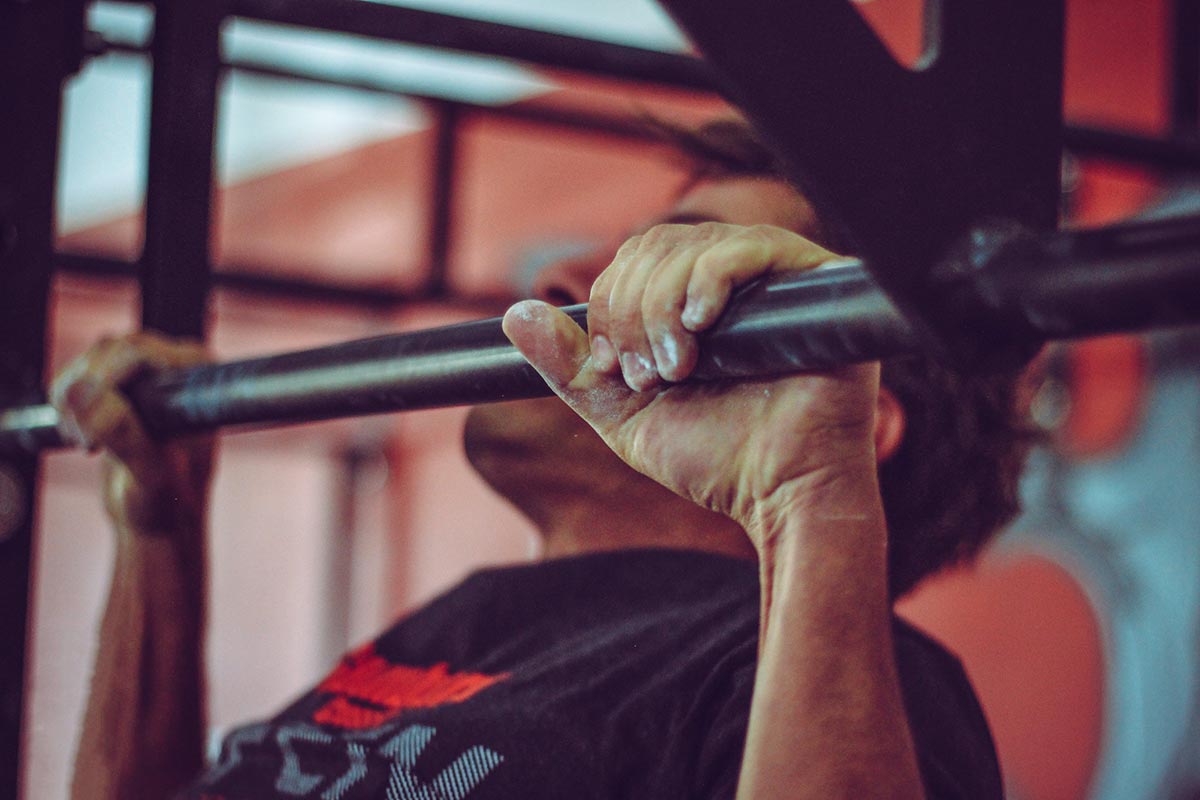Pull-ups have long been hailed as a premier bodyweight exercise for developing back and bicep strength. However, a significant portion of the population finds traditional pull-ups challenging, leading many to sideline this effective movement. Neglecting pull-ups means missing out on comprehensive upper body development, as they target not only the back and biceps but also the forearms.
In contrast, while push-ups are excellent for building upper body strength, they primarily engage the chest, shoulders, and triceps. Focusing solely on push-ups can create muscle imbalances, potentially leading to upper back and neck discomfort.
For those who struggle with standard pull-ups, 'modified' pull-ups, also known as 'Australian' pull-ups, offer an accessible alternative. This variation involves using a bar positioned approximately 30 inches above the ground, allowing you to slide underneath while keeping your feet on the floor. The advantage here is the reduction of the load by about a third of your body weight, making it feasible for most individuals to perform. Notably, modified pull-ups provide similar benefits to traditional pull-ups and, in some aspects, may offer even more advantages.
While some gym-goers utilize equipment like the Smith machine or squat rack for assisted pull-ups, those training at home can achieve similar results by installing a pull-up bar at the appropriate height. Although some might resort to improvising with a broomstick across two chairs, this method poses safety risks. Investing in home fitness equipment designed for such exercises, like the Work Horse Fitness Trainer, is a safer and more effective option.
Pulling to Chin or Chest: Understanding the Mechanics
The pulling motion, whether it's from an overhead position to your chin or towards your chest in a rowing fashion, engages similar muscle groups—the latissimus dorsi (the muscles contributing to that desirable V-shape), biceps, and forearms. One of the reasons I favor modified pull-ups is their emphasis on the muscles between the shoulder blades.
The trapezius and rhomboids, located between your shoulder blades, play a crucial role in maintaining proper shoulder alignment and posture. They counteract the often tight chest muscles, which, if left unbalanced, can lead to upper back pain. Interestingly, traditional free-hanging pull-ups don't target the upper back muscles as effectively as rowing movements, which is where modified pull-ups excel.
Incorporating modified pull-ups into your routine can help restore muscle balance in the upper torso, potentially reducing upper back and neck pain. Many individuals, including women and men who have gained some extra pounds, are pleasantly surprised to discover they can perform pull-ups in this manner.
The most delightful surprise for many is the satisfying pump in the back and biceps that comes from regularly performing pull-ups. Give modified pull-ups a try and experience comprehensive upper body training.
Recent Insights into Pull-Up Variations
Recent studies have delved into the muscle activation patterns of various pull-up variations. For instance, research comparing traditional pull-ups to suspension device pull-ups and towel pull-ups found that while all variations effectively engage the upper body muscles, there are subtle differences in muscle activation. Specifically, towel pull-ups resulted in slightly lower activation of the middle trapezius compared to traditional pull-ups, suggesting that different variations can target specific muscles to varying degrees. (Hewit et al., 2018)
Another study examined the differences between strict pull-ups, kipping pull-ups, and butterfly pull-ups. The findings indicated that kipping and butterfly pull-ups involve greater lower body muscle activation due to the momentum generated during the movements. However, this momentum also leads to reduced upper body muscle activation compared to strict pull-ups. This suggests that while kipping and butterfly pull-ups can be beneficial for developing overall body coordination and cardiovascular endurance, strict pull-ups remain superior for isolating and strengthening upper body muscles. (Williamson & Price, 2021)
These insights highlight the importance of selecting the appropriate pull-up variation based on individual fitness goals, whether it's building upper body strength, enhancing muscular endurance, or improving overall functional fitness.
Benefits of Pull-Ups: Beyond Strength
Engaging in regular pull-up exercises offers a multitude of benefits beyond mere muscle strengthening. One notable advantage is the improvement in grip strength, which is essential for daily activities such as carrying groceries or opening jars. Enhanced grip strength has also been linked to better overall health and longevity.
Moreover, pull-ups contribute to better posture by strengthening the back muscles, which helps counteract the effects of prolonged sitting—a common issue in today's sedentary lifestyle. By reinforcing these muscles, pull-ups aid in maintaining an upright posture, reducing the risk of back and neck pain.
Additionally, pull-ups are a functional exercise, meaning they mimic movements used in daily life and sports. This functional aspect enhances overall body coordination and can improve performance in various physical activities.
Incorporating pull-ups into your fitness routine not only builds muscle but also promotes overall health and functional fitness, making it a valuable exercise for individuals of all fitness levels.
Incorporating modified pull-ups into your fitness routine offers a practical and effective solution for those who find traditional pull-ups challenging. This exercise not only targets essential upper body muscles but also promotes muscle balance, potentially reducing discomfort and improving posture. Given the growing body of research supporting pull-up variations, modified pull-ups stand out as an excellent alternative for individuals looking to build strength efficiently and safely.













